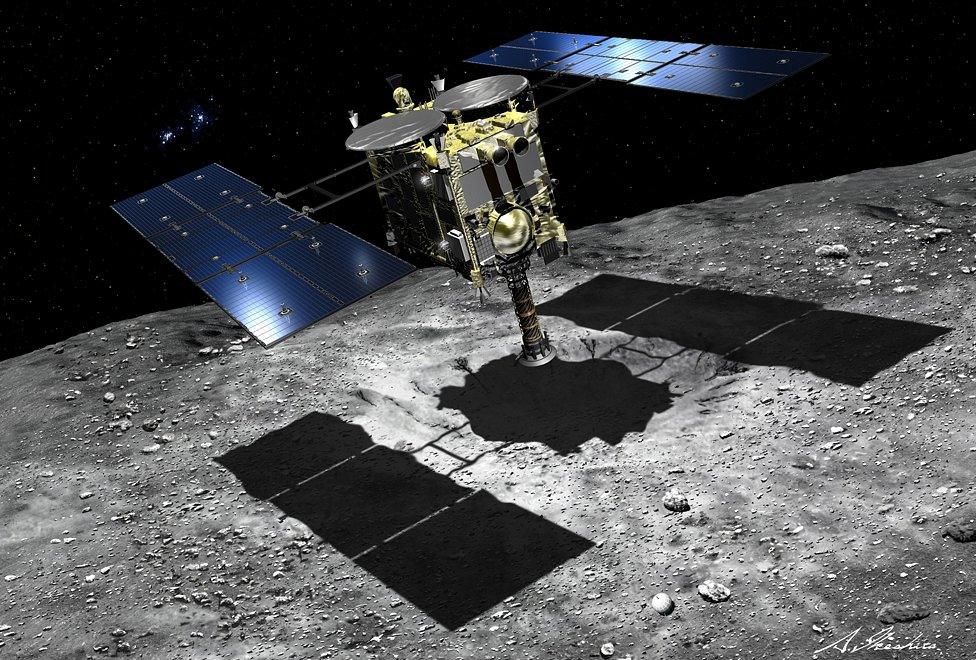'Dumpling-shaped' space rock comes into view
- Published
Allow X content?
This article contains content provided by X. We ask for your permission before anything is loaded, as they may be using cookies and other technologies. You may want to read X’s cookie policy, external and privacy policy, external before accepting. To view this content choose ‘accept and continue’.
A Japanese spacecraft is sending back images as it approaches an irregularly shaped asteroid that some on the mission have compared to a dumpling.
The Hayabusa 2 spacecraft was launched in 2014 on a quest to study the asteroid Ryugu and deliver rocks and soil from its surface to Earth.
The craft is now about 215km away from Ryugu and should arrive on 27 June.
Hayabusa's camera is starting to resolve its shape, which has been likened to a Japanese dango dumpling., external
But closer inspection shows that the object is pitted with dents or craters.
In addition, the asteroid's orbit is retrograde, meaning that it spins in the opposite direction to the Sun and the Earth.
The video shown above was compiled from 52 images captured by the spacecraft's ONC-T camera (Optical Navigation Camera - Telescopic) between 14 and 15 June.

Hayabusa 2 will use an explosive device to excavate fresh material from beneath Ryugu

Some on the mission likened the shape of Ryugu to a Japanese sweet dumpling, or dango
Around 27 June, the spacecraft will arrive at a distance of 20km from the asteroid, which goes by the formal name of 162173 Ryugu.
The Japanese Aerospace Exploration Agency (Jaxa) , externalspacecraft will then survey the object for a year-and-a-half, during which it will aim to deploy several landing craft on the surface and use an explosive device to dig out a "fresh" rocky sample from within Ryugu.
Some of the landing craft could be deployed as early as September; they include a German-made instrument package called Mascot (Mobile Asteroid Surface Scout).
The mission will depart Ryugu in December 2019 with the intention of returning to Earth with the asteroid samples in 2020.
The first Hayabusa spacecraft was launched in 2003 and reached the asteroid Itokawa in 2005. It was also designed to deliver asteroid samples to Earth but was hit by a series of mishaps.
For example, the attempt to recover soil from Itokawa suffered from communication problems, leading to initial confusion over whether the probe had actually touched down., external
But the spacecraft eventually returned to Earth in 2010 with a small amount of material from the asteroid.
An American asteroid sample return mission, Osiris-Rex, will rendezvous with the asteroid 101955 Bennu in August.
Follow Paul on Twitter., external